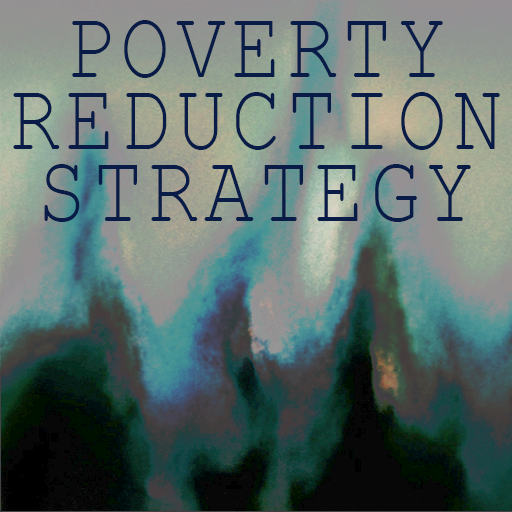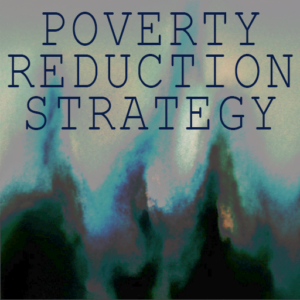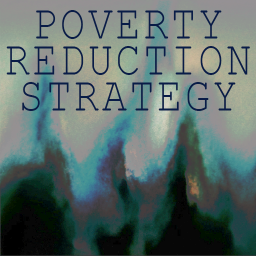Reducing Poverty Can Reduce Hardship

Author Introduction
I am a Vancouver resident, have lived in BC forever, and I am white and non-binary. I’m write this as a Person With Disability (PWD), among a crowd of peers who may or may not have the capacity to speak up or write their own story. What I know: We need a new Poverty Reduction Strategy, one that works for all who live here.
Land Acknowledgement
I would like to acknowledge that I live on the ancestral, unceded Coast Salish territories of the xʷməθkʷəy̓əm (Musqueam), sḵwx̱wú7mesh (Squamish), stoːlo (Stolo), and sel̓íl̓witulh (Tsleil-Waututh) nations. As a part of reconciliation, acknowledgement helps lead to justice.
We need a new Poverty Reduction Strategy, one that works for all who live here.
Some Context Around the Costs of Poverty
Poverty and hardship build up at once but also get deconstructed in tandem. It takes both material and social support to raise people out of and reduce hardship. It must be seen that poverty only incurs increasing costs.
It’s easy to see when an activity has only a short-term effect or when an effort to be sustainable is being set aside for a narrow scope of benefit that is not for an ecosystem, community, or specially affected group. For instance, if a forest is entirely clear-cut, the owners make the most profit and the fastest, while poverty in the entire community rises the most and lasts the longest.
In the same way, people with trouble walking may be funded enough for a cane, but that makes their disability worse, and if they are then only given enough for a manual wheelchair, their disability keeps getting worse. Repeat hospital visits because of pain and falling will always cost more than the high range electric scooter requested before a cane was covered.
What About a Disability Basket Measure?
This is what the community means by “support preventative care!” We resist achingly slow reforms for disabled people that leave us far below the Market Basket Measure (MBM).
I think the government should face the facts: not only do we live further below the poverty line than we should, but being disabled means that the Disability Basket Measure (DBM) needs to be defined and deconstructed. If one thing in this writing were to stick, it’s that a Disability Basket Measure is distinct and real.
Medical realities are associated with increased treatment costs and a variety of accommodations. When it comes to time versus money, the government can save a pound worth of cure later by spending an ounce on prevention today. Healthcare costs go up while support remains the best option.
Poverty and hardship build up at once but also get deconstructed in tandem. It takes both material and social support to raise people out of and reduce hardship.
What About the Rising Costs of Living?
For example, the federal government’s tax system recognizes that people with disabilities have higher, not lower, living costs. This is why the DTC was created.
It is not only the suffering of their symptoms that is the burden, but also the costs of painkillers, extra vitamins, and treatments that won’t get covered because the system so far commits against increasing the short-term costs. As I already suggested, the long-term costs rise where the short-term solution is what has so far been offered. The problems are long-term, and so should be the solutions.
The government and parts of civil society speak of unlocking economic possibilities, too. The most direct way to help people get out of poverty is to give them more money. Even though the few increases in PWD assistance and shelter rates over the past few years have been well received, they are mostly seen as “too little, too late” by both the DBM and the MBM.
Poor people with health problems and an inability to work all belong to someone’s family or community, and if someone is without both family and community, they need support even more!
What About the Benefits?
Income for people with complex health needs directly reduces poverty and hardship. In the official “Report on the Budget 2023 Consultation,” it is suggested that the Annual Earnings Exemption (AEE) and clawbacks for BC PWD be gotten rid of. On page 97 of the report, it is noted that “people with disabilities in BC have a higher cost of living as they often require specific” additional needs to be met.
In British Columbia, the law says that you can only get income support if you have less than $100,000 in assets. That might be fair enough, but I would also argue, in line with the 2023 Consultation, that the AEE and clawbacks should go. For one reason, such limits and reducing benefits probably do more to stifle the growth of assets than to prevent “labour fraud.”
Working more should never mean having less, which is a problem with the way the current assistance programme works. There is this idea of “basic income,” which I see as a way to make sure that all needs are met first. Working should only be seen as a good thing with no risks.
Income for people with complex health needs directly reduces poverty and hardship.
Does Income Carry a Risk?
Normally, society permits and even likes when people work to make a living, but social welfare systems complicate that a bit. For example, I’ve met PWD who carefully consider their options when they think about working to make some extra money.
That’s because they want to work more but have to worry about their disability payments being cancelled or taken back at the end of the year. By habit, some PWD plan to work less due to the risk of not having a totally secure benefit.
That’s backwards, though. Working should just be good for the economy without raising the human cost involved. When the AEE has not been surpassed, the benefits of work in addition to the stable income support are clear as day.
At the point when it looks to someone like working more is going to add up to less income, that probably constitutes some of the most emotionally complex mathematics I’ve ever done or seen.
Between the “Ability to Work” and “a Handout”
At other ranges on the spectrum of “ability to work,” someone with more suffering and more costs is effectively kept frozen in that state of hardship.
With low assets and insufficient support, a person finds more pain, and there will be increased health care and justice system costs, for example. The idea of working enough to earn the maximum of the exemption comes across with doubt, sarcasm, and anxiety.
It’s the wrong math to do in one’s head: “If I put more effort in, I’ll get more pain, they’ll start taking my gains away, I’ll have to put more effort in, and then the benefit itself is no longer assured…” Where I believe the system wants the PWD client to accept the work, there is realistic resistance.
The idea of working enough to earn the maximum of the exemption comes across with doubt, sarcasm, and anxiety.
Small Steps for Now
The prospect of working becomes, unintentionally, a troubling challenge. To get income clawed back, it is crucial to understand, before the more relevant DBM actually gets attained, that the AEE does not invite a person to work more.
If the goal of the AEE was to get people to work, it should be seen as the wrong way to do it, and it should be scrapped completely instead of being managed in small steps.
The $1,200 a year bonus for AEE that was announced in the 2023 budget is less than half of my monthly rent in Vancouver, which I can pay because of the Ministry Self Employment Program.
I’ve experienced and witnessed the perspective that I do not deserve to live here if I cannot cover every bill myself without support. I think that is an abhorrent position. I also thrive in Vancouver socially and logistically due to the community and transit.
What Is The Cycle of Poverty?
I’ve heard people say that “drug users don’t deserve a handout.” What I am defending here is that the supposed “handout” costs the system more after the hospital and justice system bills. More importantly, though, poverty is a cycle because the constant costs it imposes on people paralyze our communities and keep things from getting better.
In reality, racist colonists from many generations ago set up the financial and human costs. This is not who we are now, and we should try not to become like them again. These costs were invented to keep alive some historical injustices, like slavery and not giving native people or non-men the right to participate in democracy.
Otherwise, it’s time to move forward in history now. Substantial income support is a basic need and the best solution. I don’t want to point fingers, but I openly call out real history.
In reality, racist colonists from many generations ago set up the financial and human costs. This is not who we are now, and we should try not to become like them again.
Come So Far, Still Close to Hardship
I have a PWD bus pass, don’t have to pay for gas, and have a wide range of healthy food available. Since I work from home but could not if I rented at $375 or $500 a month in Vancouver, I should get more than a portion of my rent as a work expense.
I literally must live to work and work to live, payday to payday, and I’ll reach the AEE in less than half the year.
I pay for most of my own expenses and am about two months away from being homeless because of a health problem that might come back.
That might mean I could not keep the same level of work, even if momentarily. I worked hard for years to overcome my problems. Doctors, psychiatrists, neurologists, and hospital nursing teams helped me, but it cost a lot.
All of their effort, the costs of drugs, and my huge success could be “wasted” in a short amount of time during an otherwise small crisis. Such a setback might depend simply on interrupting the payday cycle just a little.
If one thing in this writing were to stick, it's that a Disability Basket Measure is distinct and real.
Conclusion
Instead, the government should swoop in on such situations, providing much more up front to stop the steep rise of long-term costs.
Again, the short-term costs are higher up front, but long-term, the overall costs go down, which means that the government saves money on its budget by helping everyone and by making poverty less hard. Everything will be more productive.
The cost of something akin to a “poverty emergency contingency fund” for all British Columbians, First Nations, and residents would be significantly lower.
I think many have done the math—the resource-intensive and riskier interventions of the emergent health care, justice, and ward systems cost a lot more. At the very least, recognizing a “disability basket measure” would be a very important step. Acknowledgement leads to justice.
I’ve heard people say that “drug users don’t deserve a handout.”
What I am defending here is that the supposed “handout” costs the system more after the hospital and justice system bills.
More importantly, though, poverty is a cycle because the constant costs it imposes on people paralyze our communities and keep things from getting better.


